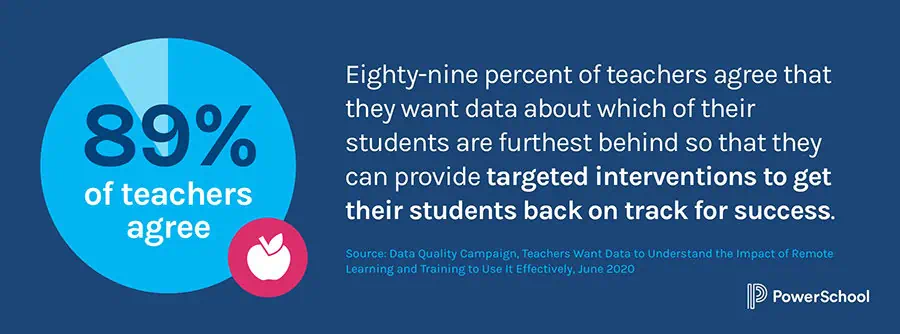A recent survey has revealed just how many digital tools teachers use for daily instruction during blended and remote learning1. The average is seven. Yet, even with so many edtech tools, only 31 percent of teachers “strongly agree” that they had access to the student data they needed during school closures2 to provide relevant virtual instruction, which likely means that teachers aren’t using the right K-12 edtech tools or that their tools do not work well together.
COVID-related disruptions have highlighted the need for classroom integrations that genuinely meet the needs of students and teachers in any environment. Interoperable edtech—like PowerSchool’s classroom products—alleviates many of the instructional pain points caused by using multiple systems for teaching and learning.
Interoperable Classroom Tools Set Educators up for Success
Easy access with single sign-on (SSO) gives makes it easy for educators to be logged into multiple apps at once. With PowerSchool’s app switcher, teachers can simply click to switch from one tool to another, with no need to log in again. The app switcher, paired with your district’s SSO, boosts interoperability between PowerSchool products and streamlines K-12 workflows, which saves teachers time to focus on what matters most.
Information exchange takes away the legwork of sharing student data between systems. Eighty-nine percent of teachers agree that they want data about which of their students are furthest behind so that they can provide targeted interventions to get their students back on track for success3. With interoperable classroom tools, grades and attendance sync directly between PowerSchool Schoology Learning and PowerSchool SIS. That means it’s simpler for educators to provide data-driven instruction to students based on their unique needs.
Embedded content and assessments allow schools and districts to keep the learning going for remote and blended learners. Educators can build media-rich courses and assessments that leverage new and existing content, reused content from previous courses, and even embedded content from Google Drive, Microsoft Office, or other web tools. Customizable course content can easily be embedded and assigned for those students in special programs.
A streamlined workflow provides a user-friendly experience. For example, a teacher can add a benchmark assessment to the K-12 learning management system (LMS) course materials so that students don’t have to go anywhere else to access their assessment. That same teacher can then toggle over to PowerSchool Performance Matters to view course assessment data from Schoology Learning alongside third-party assessment data and attendance data for each student.
These are just a few of the ways in which interoperable edtech saves teachers a ton of time. When dealing with learning gaps that have been widened by COVID-19 and remote learning, teachers need as much extra time as they can get. By connecting edtech tools that give more in-depth insights into student attendance, behavior, proficiency on learning objectives, assessments, SEL data, demographic data, and more, teachers are better equipped for whatever K-12 education may look like this year and in the years to come.
Learn more about interoperable classroom solutions
Resources
- “How many new digital tools are teachers using now?” District Administration, Dec. 15, 2020. https://districtadministration.com/teachers-pay-teachers-ed-tech-digitals-tools-instructional-technology/
- “Teachers Want Data to Understand the Impact of Remote Learning and Training to Use It Effectively,” Data Quality Campaign, June 24, 2020. https://dataqualitycampaign.org/resource/2020-teacher-poll/
- https://dataqualitycampaign.org/resource/2020-teacher-poll/
